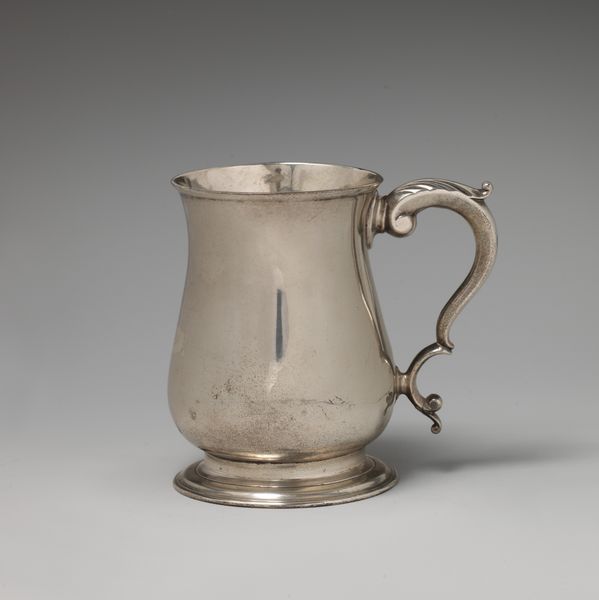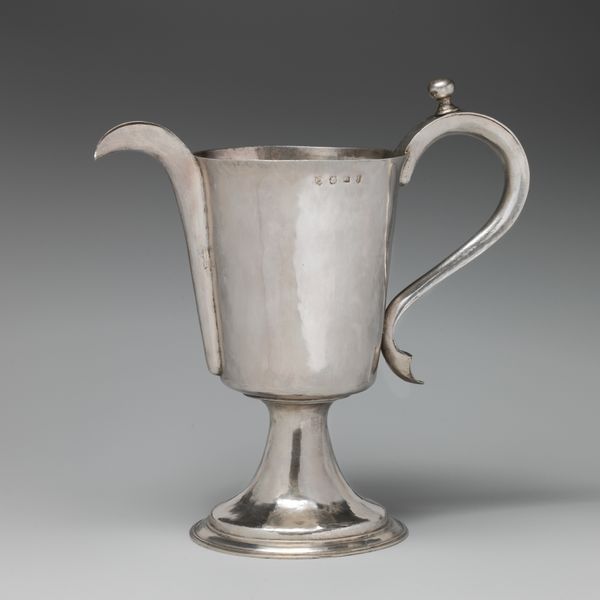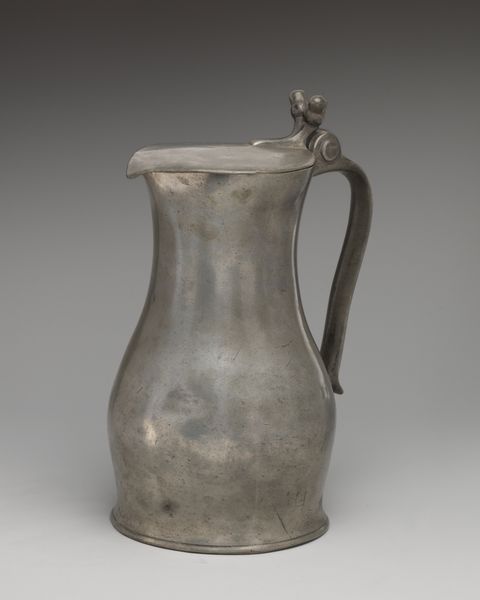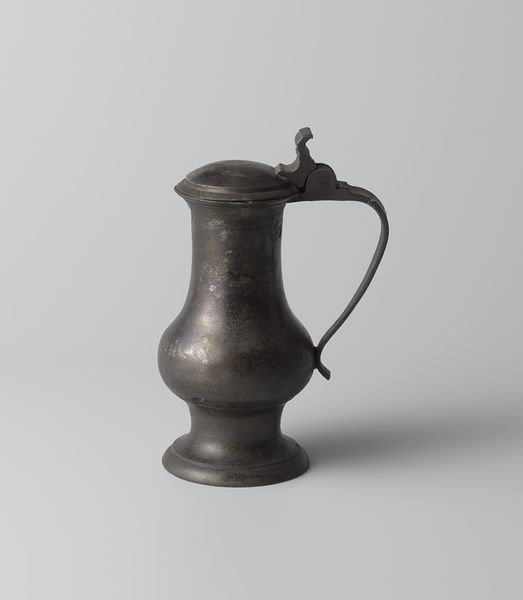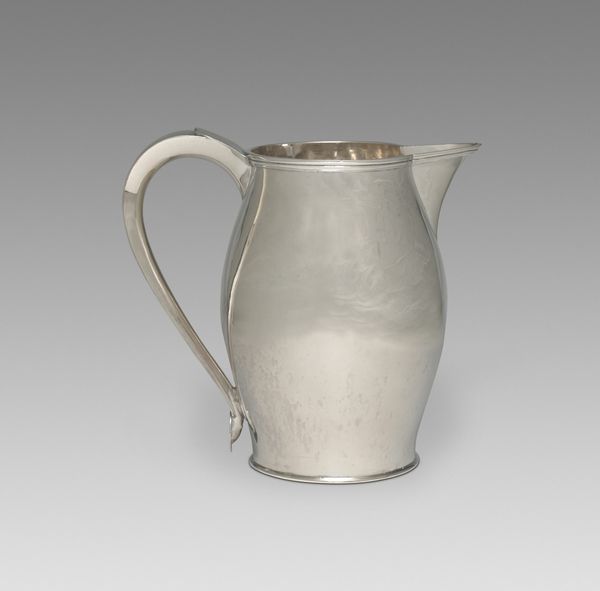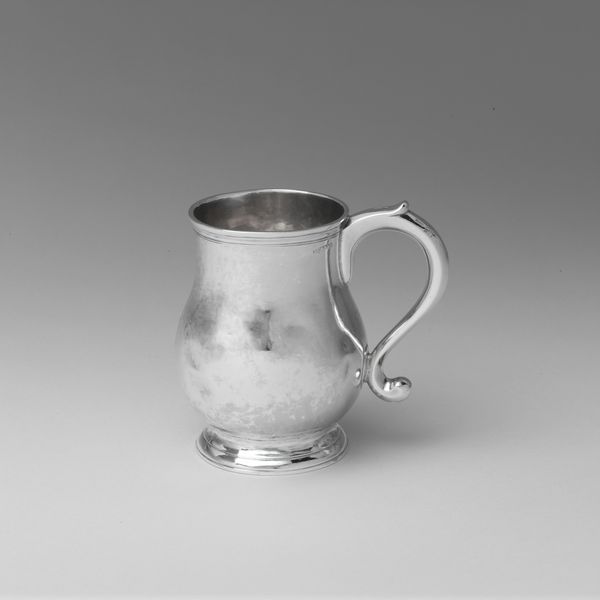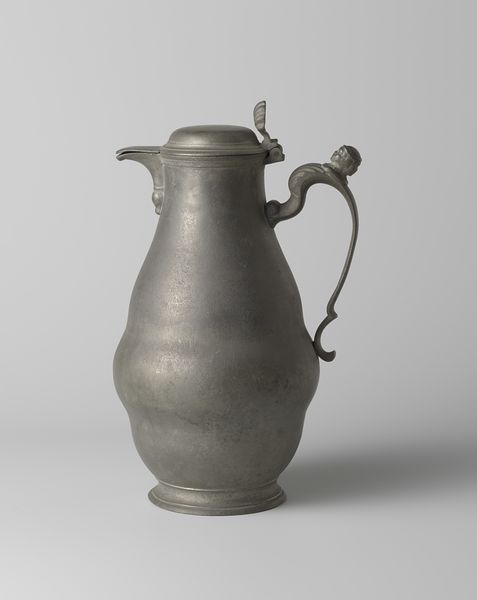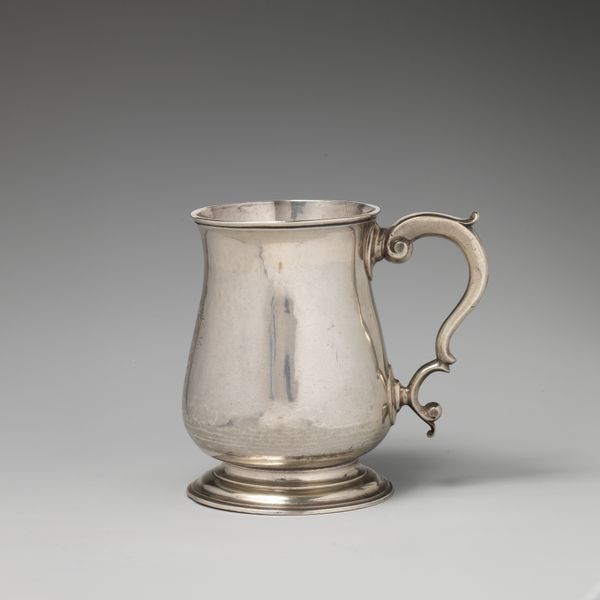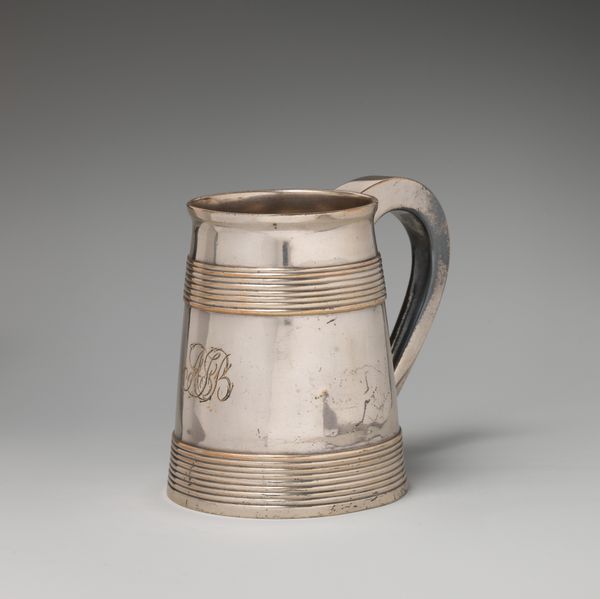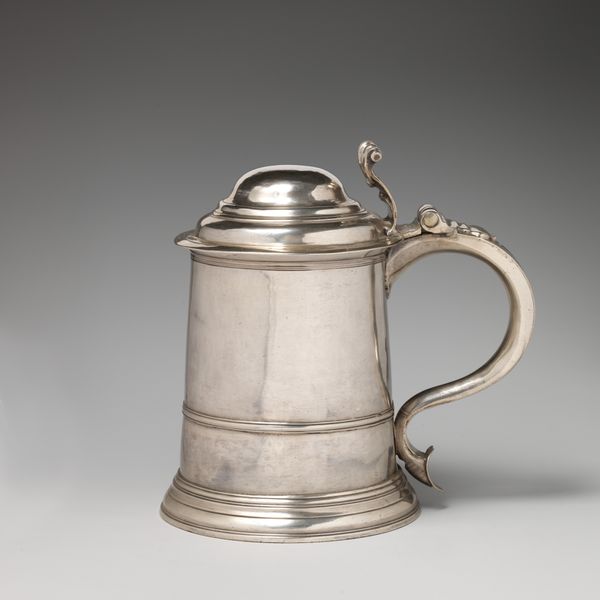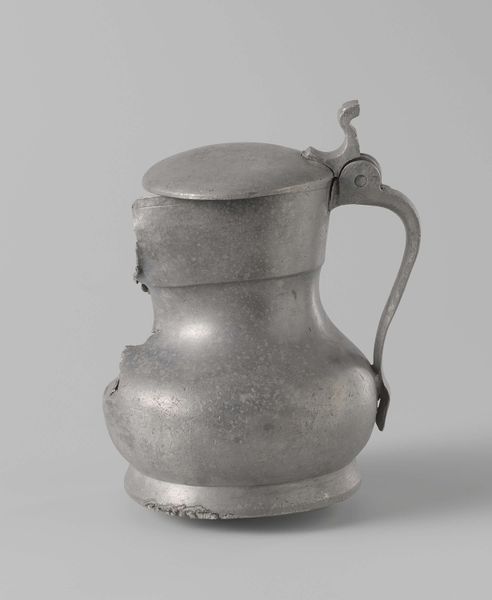
Dimensions: Overall: 4 7/8 × 3 3/4 in. (12.4 × 9.5 cm)
Copyright: Public Domain
Curator: Looking at this utilitarian object, I'm immediately drawn to its heft and simple form. It has a beautiful patina too. Editor: Yes, there's a lovely subtle gleam to the surface. This is a stoneware vessel, a mug actually, called "Measure". It’s attributed to James Yates, dating from around 1800 to 1815. What’s especially fascinating is the context it comes from and the potential stories it can tell about daily life and even trade systems of that period. Curator: It’s amazing how much history can be embedded in something so commonplace. The way we think about objects now, so often mass-produced, and consumed without much thought, feels utterly disconnected from a time when even a simple mug would have represented craftsmanship, maybe even a family legacy. Does its location have any bearing on the class of person or trade this object served? Editor: Absolutely. Yates worked primarily in London and would have been catering to an increasingly urban market. Objects like these pewter mugs became fixtures in taverns and homes as liquid consumption exploded across Europe during that period. Examining probate records and business documents of Yates might tell us more about which specific segment of the public were purchasers. Curator: Fascinating. The choice of material, metalwork feels so deliberate here. Do we know anything about this pewter piece from this time period, its socio-economic significance, and what it conveyed to the user? Editor: Well, pewter allowed for relative affordability, so while it might not have had the flashiness of silver, it was still durable and respectable. The form itself suggests communal drinking customs and emerging social structures. The way these were regulated is itself a matter of historic study. Think of it - debates surrounding sobriety, labor productivity and its role in both private life, and public spaces. Curator: That transforms my understanding. I saw it just as a container. Now I envision hands clasping it, conversations unfolding over its rim. I was thinking just about form, line, texture, and light. Now, though, I recognize that the mug’s simplicity allowed it to stand in intimate relationships with labor movements, with socio-economic status, and class identity! Editor: Precisely. Material culture opens the door to broader stories concerning social relations and identity. Next time you grasp your coffee mug, ponder its past incarnations. Curator: It has broadened my perspective too. It reminds me that art history can shed light on even the most everyday items around us.
Comments
No comments
Be the first to comment and join the conversation on the ultimate creative platform.
